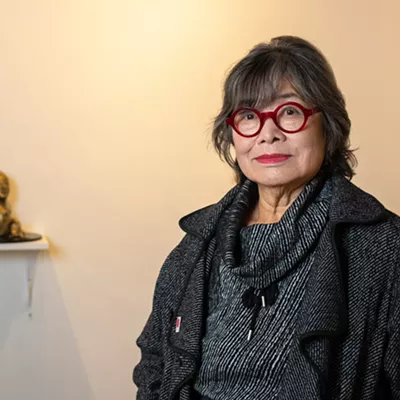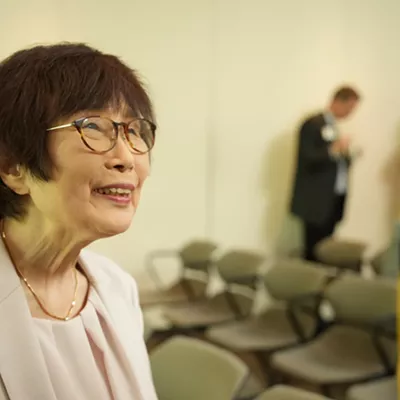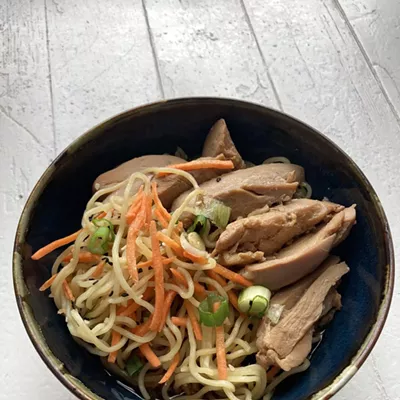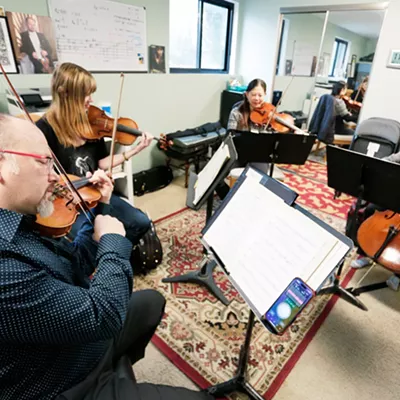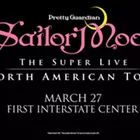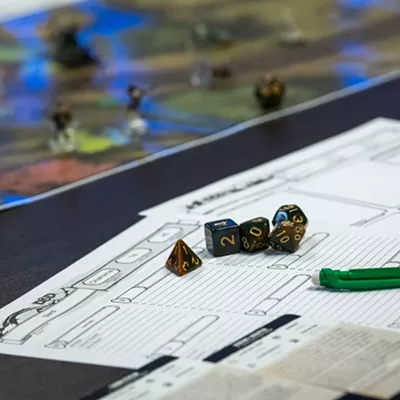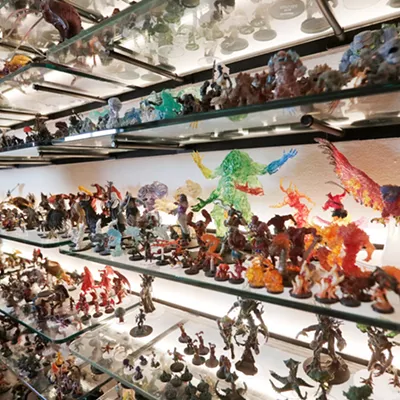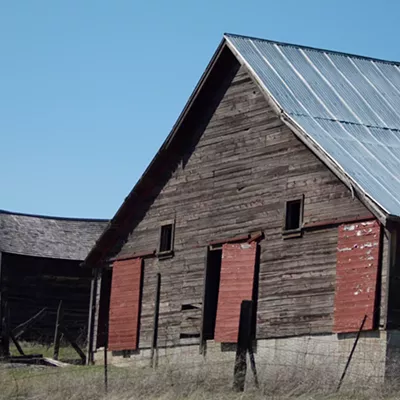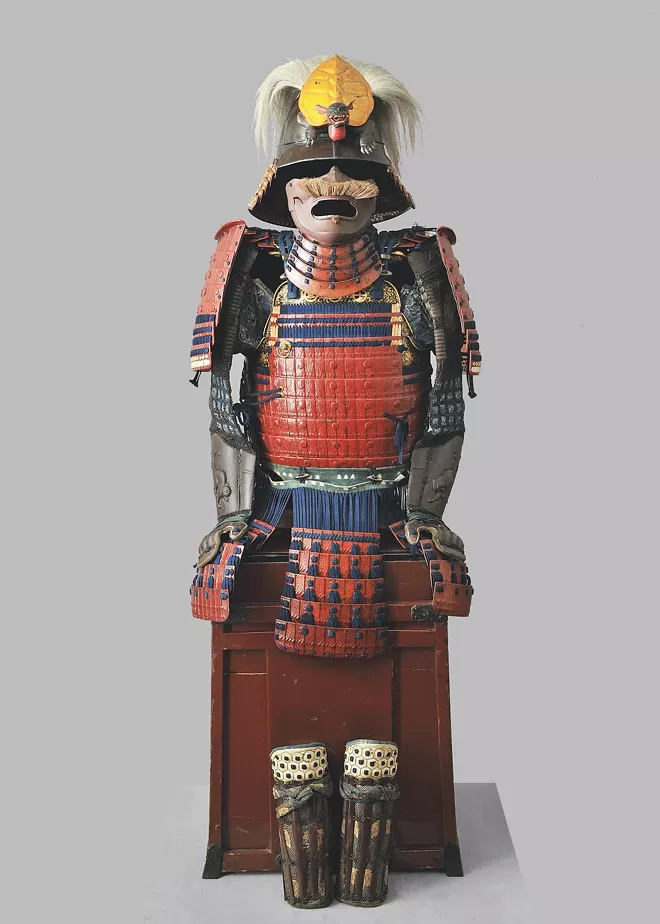
Though their meticulously crafted battle armor and elaborate helmets shaped into utterly frightening countenances could fill the hearts of any foe with terror, Japan's famous samurai warriors also had a more refined side.
When not outfitted for war, members of the island nation's elite military class were engaged with fine art, culture, literature and even games. And while Japan's long and rich history is certainly filled with plenty of upheaval (see the aptly named Warring States period), there were many stretches of peace, like the 264-year Edo period (1603-1867).
These juxtaposed ideals and moments of history are now showcased in intricate detail via the Northwest Museum of Arts & Culture's latest set of hosted exhibitions: "Samurai, Sunrise, Sunset" and "The Evolution of the Japanese Sword," on display until June and May, respectively.
"Samurai, Sunrise, Sunset" features 120 pieces on loan from the Museo Stibbert in Florence, Italy, ranging from eight full sets of samurai armor and all kinds of weaponry (swords, spears and even early firearms) to the fine lacquerware calligraphy boxes, tea sets and other items — both for battle and entertainment — that samurai carried with them. The collection's contents span from the 16th to 19th century.
"In this exhibition, we would like to show that samurai were not just warrior[s], and that's why we chose the most decorated arms and armor," says Riccardo Franci, the Stibbert's armory curator who traveled to Spokane last week to help MAC staff install the exhibition.
"For example, you will see the suits of armor are very spectacular — gilded leather, gilded lacquerware, and decorated with animals and all kinds of materials. And the same things about the other arts and crafts that we are presenting," he continues. "We wanted to show that they were not only warrior[s], and as warrior[s], they are not interested only in war. ... In Japan, there is a philosophy that is called bunbu that means that warriors had to know the warfare and literature and culture. These two aspects were mandatory to be a good samurai."
Just like the periods of history it represents, the Stibbert's Japanese collection has a unique and fascinating backstory.
British-Italian museum founder Frederick Stibbert used his immense inherited wealth to collect antique sets of armor, weapons and other war-related artifacts from around the world, including medieval Europe and the Middle East. Franci says the museum's catalog of more than 50,000 pieces (also including fine art, costumes, furnishings and more), includes about 3,000 entries for the Japanese collection. Because most of those pieces were acquired after the country reopened its borders at the start of the Meiji era in 1868, he estimates it's the oldest and largest collection of Japanese armor and weapons in the world outside of Japan.
"Stibbert's idea was to create a place where different cultures could be compared together," Franci says. "He decided to have a small castle full of stuff related to arms and armor and chivalry."
The sprawling Italian villa was also Stibbert's main residence. In his will he directed that the property and all its contents be maintained as he had originally designed it, and opened to the public as a museum and place of learning.
The collector's acquisition, starting in 1871, of so many exquisite pieces from Japan was largely due to opportune timing, Franci says.
"He was never in Japan. He bought everything in Italy," Franci says. "There were famous shops for Japanese objects in Florence, [called] Janetti and Son. It was a very lucky period because so many landlords and many warriors sold, not their swords because the swords were highly treasured, but they sold [their armor]. And [it was] fairly affordable to buy at the time."
The items featured in "Samurai, Sunrise, Sunset" were selected to showcase the Stibbert collection's span across time.
"They were chosen to show as much as possible — many different kinds of weapons, kinds of armor, and different level and styles of decorations," Franci says. "And for the small furniture to show different pieces of art, of lacquerware or bronzes or ceramic, to show all different kinds of items that were favored by the samurai as collectible. And among the pieces of our collection, we chose some from the most spectacular."
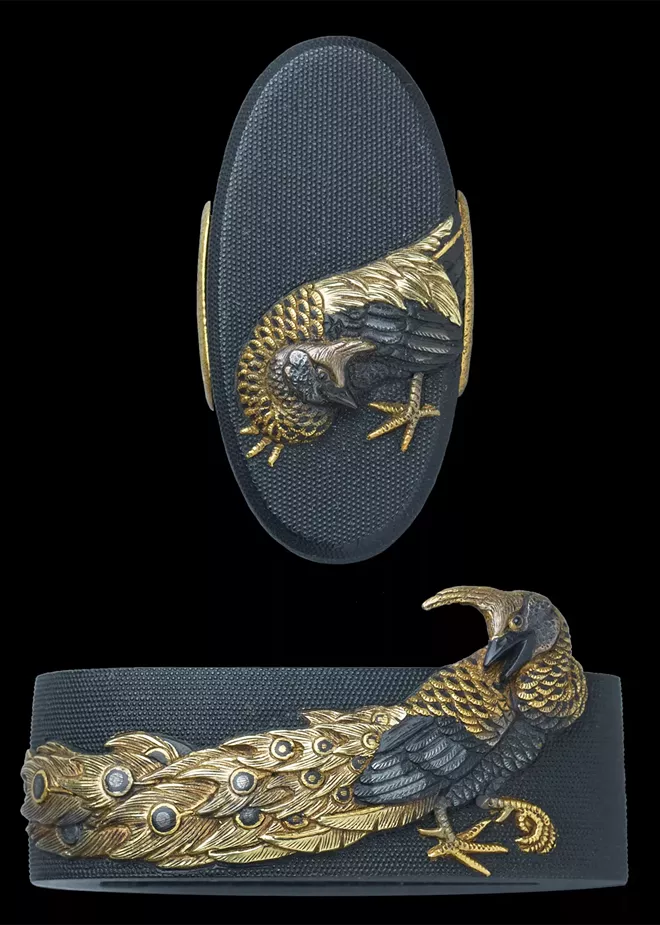
On display alongside "Samurai, Sunrise, Sunset" is a second, smaller exhibition focusing on the art of Japanese swordmaking as it was honed across centuries.
"The Evolution of the Japanese Sword" comes to Spokane by way of Los Angeles-based Jidai Arts, and features a dozen swords ranging from contemporary reproductions all the way back to the 11th century. Intricately crafted pieces that adorned the samurai weaponry are also featured, such as hand guards (tsuba), handle end caps (kashira) and other ornamentation (menuki).
Each sword is displayed without its handle (tsuka) attached so that inscriptions on the tang (nakago) are visible noting its maker and sometimes even when and how it was tested for its lethality using actual human bodies (likely those of already executed criminals).
"It was, and this sounds super crass, the quality assurance of the blade and the pedigree of the blade," says Kayla Tackett, the MAC's exhibitions and collections director.
Under the gallery's spotlights, the highly polished steel glistens and shines like a mirror. In this setting, the blades' precise cutting power is practically palpable.
The Evolution of the Japanese Sword: Through May 4
Samurai, Sunrise, Sunset: Feb. 1-June 1
Museum open Tue-Sun from 10 am-5 pm; $9-$15 admission (members free)
Northwest Museum of Arts & Culture, 2316 W. First Ave.
northwestmuseum.org, 509-456-3931
"All of the swords in the gallery were chosen for being really fine examples of the craft," Tackett says. "When we were installing, the curators were cleaning them and [said] they had taken all the blades to Japan to have them polished and oiled to get them show-ready."
The 11th century sword in the exhibit is believed to have been made by Ko Hoki Sadatsuna, a student of the master swordmaker Yasutsuna. Yasutsuna is known for crafting the Djigiri, a listed National Treasure of Japan that's considered the most important sword in the nation's history.
"You can see the little chips in the top, because this is a sword that's been used, and it's so old, of course," Tackett says. "There are a lot of connections in this gallery to swordsmiths who've made famous blades."
To coincide with both Japanese culture exhibitions, the MAC has a full schedule of workshops and special events this spring, ranging from film screenings to classes on Japanese calligraphy and sumi-e (black ink painting).
"I don't think there has ever been a samurai show in Spokane," says Wesley Jessup, executive director of the MAC. "A lot of what we do here is regional. We focus on the tribes and the artists and some of the history, but when we have opportunities to bring the world to Spokane, to bring in shows that are not regional like this one, we like to do that every year, year-and-a-half." ♦




